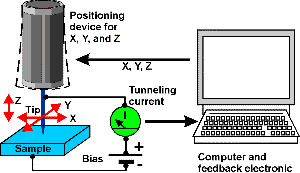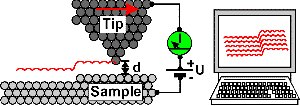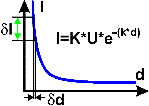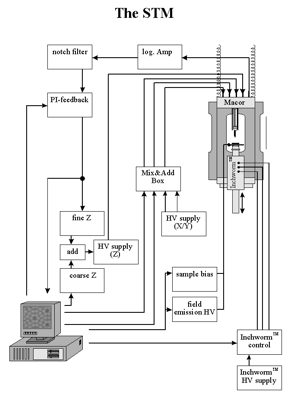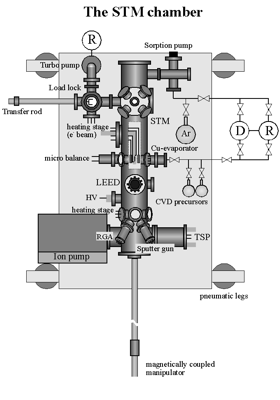Scanning Tunneling MicroscopyBasic ConceptScanning tunneling microscopy is a microscopical technique that allows the investigation of electrically conducting surfaces down to the atomic scale. In the following I will give a very short overview of the basic principle.
In the scanning tunneling microscope
the sample is scanned by a very fine metallic tip. The tip is mechanically
connected to the scanner, an XYZ positioning device realized by means of
piezoelectric materials. Tunneling CurrentThe reason for the extreme magnification capabilities of the STM down to the atomic scale is mainly the physical properties of the tunneling current.
The tunneling current flows across
the small gap that separates the tip from the sample, a case that is
forbidden in classical physics but that can be explained by the better
approach of quantum mechanics. I= K*U*e -(k*d); k and K are constants. Very small changes in the tip-sample separation induce large changes in the tunneling current! This has the consequences that:
Tunneling TipThe question I am asked most is "How do you obtain these wonderful tunneling tips where only one atom is at the top?" But it is really easy to obtain such tips by etching or tearing a thin metal wire. I often use the following comparison: Imagine pouring a bucket of sand on the floor. If you examine the resulting conic heap in most cases you will find a grain of sand that represents the outermost peak. Very seldomly you will have several grains exactly representing the peak together. Now take the heap of sand for the tip and remember the exponential decay of the tunneling current. The tunneling current is carried and the sample surface will be scanned only by this outermost grain of sand... sorry: atom.
|
